 W
WIn physics, mathematics, and related fields, a wave is a propagating dynamic disturbance of one or more quantities, sometimes as described by a wave equation. In physical waves, at least two field quantities in the wave medium are involved. Waves can be periodic, in which case those quantities oscillate repeatedly about an equilibrium (resting) value at some frequency. When the entire waveform moves in one direction it is said to be a traveling wave; by contrast, a pair of superimposed periodic waves traveling in opposite directions makes a standing wave. In a standing wave, the amplitude of vibration has nulls at some positions where the wave amplitude appears smaller or even zero.
 W
WIn physics, the accordion effect, known also as the slinky effect, concertina effect, elastic band effect, and string instability, occurs when fluctuations in the motion of a travelling body causes disruptions in the flow of elements following it. This can happen in road traffic, foot marching, bicycle and motor racing, and, in general, to processes in a pipeline. These are examples of nonlinear processes. The accordion effect generally decreases the throughput of the system in which it occurs.
 W
WAcousto-optics is a branch of physics that studies the interactions between sound waves and light waves, especially the diffraction of laser light by ultrasound through an ultrasonic grating.
 W
WAn atmospheric wave is a periodic disturbance in the fields of atmospheric variables which may either propagate or not. Atmospheric waves range in spatial and temporal scale from large-scale planetary waves to minute sound waves. Atmospheric waves with periods which are harmonics of 1 solar day are known as atmospheric tides.
 W
WIn physics, a breather is a nonlinear wave in which energy concentrates in a localized and oscillatory fashion. This contradicts with the expectations derived from the corresponding linear system for infinitesimal amplitudes, which tends towards an even distribution of initially localized energy.
 W
WChladni's law, named after Ernst Chladni, relates the frequency of modes of vibration for flat circular surfaces with fixed center as a function of the numbers m of diametric (linear) nodes and n of radial (circular) nodes. It is stated as the equation
 W
WA crest point on a wave is the maximum value of upward displacement within a cycle. A crest is a point on a surface wave where the displacement of the medium is at a maximum. A trough is the opposite of a crest, so the minimum or lowest point in a cycle.
 W
WA damped sine wave or damped sinusoid is a sinusoidal function whose amplitude approaches zero as time increases. Damped sine waves are commonly seen in science and engineering, wherever a harmonic oscillator is losing energy faster than it is being supplied.
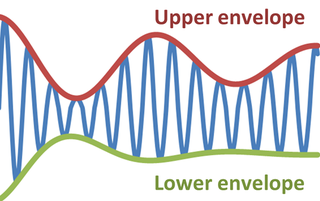 W
WIn physics and engineering, the envelope of an oscillating signal is a smooth curve outlining its extremes. The envelope thus generalizes the concept of a constant amplitude into an instantaneous amplitude. The figure illustrates a modulated sine wave varying between an upper and a lower envelope. The envelope function may be a function of time, space, angle, or indeed of any variable.
 W
WFermat's principle, also known as the principle of least time, is the link between ray optics and wave optics. In its original "strong" form, Fermat's principle states that the path taken by a ray between two given points is the path that can be traversed in the least time. In order to be true in all cases, this statement must be weakened by replacing the "least" time with a time that is "stationary" with respect to variations of the path — so that a deviation in the path causes, at most, a second-order change in the traversal time. To put it loosely, a ray path is surrounded by close paths that can be traversed in very close times. It can be shown that this technical definition corresponds to more intuitive notions of a ray, such as a line of sight or the path of a narrow beam.
 W
WIn a distribution, full width at half maximum (FWHM) is the difference between the two values of the independent variable at which the dependent variable is equal to half of its maximum value. In other words, it is the width of a spectrum curve measured between those points on the y-axis which are half the maximum amplitude.
 W
WA green wave occurs when a series of traffic lights are coordinated to allow continuous traffic flow over several intersections in one main direction.
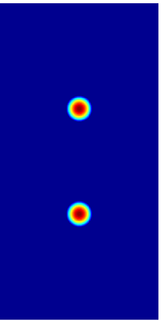 W
WIn mathematics, the eigenvalue problem for the Laplace operator is known as the Helmholtz equation. It corresponds to the linear partial differential equation:
 W
WIn electrical engineering, homodyne detection is a method of extracting information encoded as modulation of the phase and/or frequency of an oscillating signal, by comparing that signal with a standard oscillation that would be identical to the signal if it carried null information. "Homodyne" signifies a single frequency, in contrast to the dual frequencies employed in heterodyne detection.
 W
WInertial waves, also known as inertial oscillations, are a type of mechanical wave possible in rotating fluids. Unlike surface gravity waves commonly seen at the beach or in the bathtub, inertial waves flow through the interior of the fluid, not at the surface. Like any other kind of wave, an inertial wave is caused by a restoring force and characterized by its wavelength and frequency. Because the restoring force for inertial waves is the Coriolis force, their wavelengths and frequencies are related in a peculiar way. Inertial waves are transverse. Most commonly they are observed in atmospheres, oceans, lakes, and laboratory experiments. Rossby waves, geostrophic currents, and geostrophic winds are examples of inertial waves. Inertial waves are also likely to exist in the molten core of the rotating Earth.
 W
WIntermodulation (IM) or intermodulation distortion (IMD) is the amplitude modulation of signals containing two or more different frequencies, caused by nonlinearities or time variance in a system. The intermodulation between frequency components will form additional components at frequencies that are not just at harmonic frequencies of either, like harmonic distortion, but also at the sum and difference frequencies of the original frequencies and at sums and differences of multiples of those frequencies.
 W
WInternal waves are gravity waves that oscillate within a fluid medium, rather than on its surface. To exist, the fluid must be stratified: the density must change with depth/height due to changes, for example, in temperature and/or salinity. If the density changes over a small vertical distance, the waves propagate horizontally like surface waves, but do so at slower speeds as determined by the density difference of the fluid below and above the interface. If the density changes continuously, the waves can propagate vertically as well as horizontally through the fluid.
 W
WLongitudinal waves are waves in which the displacement of the medium is in the same direction as, or the opposite direction to, the direction of propagation of the wave. Mechanical longitudinal waves are also called compressional or compression waves, because they produce compression and rarefaction when traveling through a medium, and pressure waves, because they produce increases and decreases in pressure.
 W
WIn fluid dynamics, a Mach wave is a pressure wave traveling with the speed of sound caused by a slight change of pressure added to a compressible flow. These weak waves can combine in supersonic flow to become a shock wave if sufficient Mach waves are present at any location. Such a shock wave is called a Mach stem or Mach front. Thus, it is possible to have shockless compression or expansion in a supersonic flow by having the production of Mach waves sufficiently spaced. A Mach wave is the weak limit of an oblique shock wave where time averages of flow quantities don't change;. If the size of the object moving at the speed of sound is near 0, then this domain of influence of the wave is called Mach cone.
 W
WA mechanical wave is a wave that is an oscillation of matter, and therefore transfers energy through a medium. While waves can move over long distances, the movement of the medium of transmission—the material—is limited. Therefore, the oscillating material does not move far from its initial equilibrium position. Mechanical waves transport energy. This energy propagates in the same direction as the wave. Any kind of wave has a certain energy. Mechanical waves can be produced only in media which possess elasticity and inertia.
 W
WA metachronal rhythm or metachronal wave refers to wavy movements produced by the sequential action of structures such as cilia, segments of worms or legs. These movements produce the appearance of a travelling wave.
 W
WA harmonic sound is said to have a missing fundamental, suppressed fundamental, or phantom fundamental when its overtones suggest a fundamental frequency but the sound lacks a component at the fundamental frequency itself. The brain perceives the pitch of a tone not only by its fundamental frequency, but also by the periodicity implied by the relationship between the higher harmonics; we may perceive the same pitch even if the fundamental frequency is missing from a tone.
 W
WThe Mountain Wave Project (MWP) pursues global scientific research of gravity waves and associated turbulence. MWP seeks to develop new scientific insights and knowledge through high altitude and record seeking glider flights with the goal of increasing overall flight safety and improving pilot training.
 W
WTraditionally in Western music, a musical tone is a steady periodic sound. A musical tone is characterized by its duration, pitch, intensity, and timbre. The notes used in music can be more complex than musical tones, as they may include aperiodic aspects, such as attack transients, vibrato, and envelope modulation.
 W
WA node is a point along a standing wave where the wave has minimum amplitude. For the instance, in a vibrating guitar string, the ends of the string are nodes. By changing the position of the end node through frets, the guitarist changes the effective length of the vibrating string and thereby the note played. The opposite of a node is an anti-node, a point where the amplitude of the standing wave is at maximum. These occur midway between the nodes.
 W
WA P wave is one of the two main types of elastic body waves, called seismic waves in seismology. P waves travel faster than other seismic waves and hence are the first signal from an earthquake to arrive at any affected location or at a seismograph. P waves may be transmitted through gases, liquids, or solids.
 W
WThe Peregrine soliton is an analytic solution of the nonlinear Schrödinger equation. This solution was proposed in 1983 by Howell Peregrine, researcher at the mathematics department of the University of Bristol.
 W
WA pulse wave or pulse train is a kind of non-sinusoidal waveform that includes square waves and similarly periodic but asymmetrical waves. It is a term common to synthesizer programming, and is a typical waveform available on many synthesizers. The exact shape of the wave is determined by the duty cycle of the oscillator. In many synthesizers, the duty cycle can be modulated for a more dynamic timbre. The pulse wave is also known as the rectangular wave, the periodic version of the rectangular function.
 W
WRadio waves are a type of electromagnetic radiation with wavelengths in the electromagnetic spectrum longer than infrared light. Radio waves have frequencies as high as 300 gigahertz (GHz) to as low as 30 hertz (Hz). At 300 GHz, the corresponding wavelength is 1 mm ; at 30 Hz the corresponding wavelength is 10,000 km. Like all other electromagnetic waves, radio waves travel at the speed of light in vacuum. Radio waves are generated by charged particles undergoing acceleration, such as time-varying electric currents. Naturally occurring radio waves are emitted by lightning and astronomical objects.
 W
WRarefaction is the reduction of an item's density, the opposite of compression. Like compression, which can travel in waves, rarefaction waves also exist in nature. A common rarefaction wave is the area of low relative pressure following a shock wave.
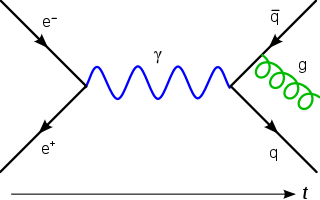 W
WIn physics, specifically relativistic quantum mechanics (RQM) and its applications to particle physics, relativistic wave equations predict the behavior of particles at high energies and velocities comparable to the speed of light. In the context of quantum field theory (QFT), the equations determine the dynamics of quantum fields.
 W
WIn seismology, S waves, secondary waves, or shear waves are a type of elastic wave and are one of the two main types of elastic body waves, so named because they move through the body of an object, unlike surface waves.
 W
WA sensitive flame is a gas flame which under suitable adjustment of pressure resonates readily with sounds or air vibrations in the vicinity. Noticed by both the American scientist John LeConte and the English physicist William Fletcher Barrett, they recorded the effect that a shrill note had upon a gas flame issuing from a tapering jet. The phenomenon caught the attention of the Irish physicist John Tyndall who gave a lecture on the process to the Royal Institution in January 1867.
 W
WA sine wave or sinusoid is a mathematical curve that describes a smooth periodic oscillation. A sine wave is a continuous wave. It is named after the function sine, of which it is the graph. It occurs often in both pure and applied mathematics, as well as physics, engineering, signal processing and many other fields. Its most basic form as a function of time (t) is:
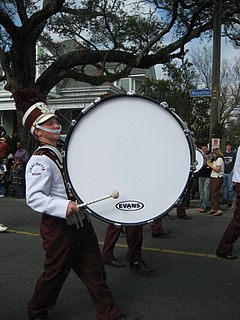 W
WIn physics, sound is a vibration that propagates as an acoustic wave, through a transmission medium such as a gas, liquid or solid.
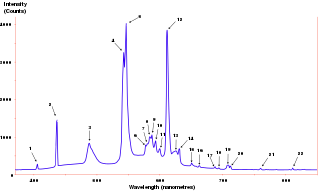 W
WThe power spectrum of a time series describes the distribution of power into frequency components composing that signal. According to Fourier analysis, any physical signal can be decomposed into a number of discrete frequencies, or a spectrum of frequencies over a continuous range. The statistical average of a certain signal or sort of signal as analyzed in terms of its frequency content, is called its spectrum.
 W
WThe superposition principle, also known as superposition property, states that, for all linear systems, the net response caused by two or more stimuli is the sum of the responses that would have been caused by each stimulus individually. So that if input A produces response X and input B produces response Y then input produces response.
 W
WTotal internal reflection (TIR) is the optical phenomenon in which the surface of the water in a fish-tank when viewed from below the water level, reflects the underwater scene like a mirror, with no loss of brightness (Fig. 1). In general, TIR occurs when waves in one medium reach the boundary with another medium at a sufficiently slanting angle, provided that the second ("external") medium is transparent to the waves and allows them to travel faster than in the first ("internal") medium. TIR occurs not only with electromagnetic waves such as light and microwaves, but also with other types of waves, including sound and water waves. In the case of a narrow train of waves, such as a laser beam (Fig. 2), we tend to describe the reflection in terms of "rays" rather than waves. In a medium whose properties are independent of direction, such as air, water, or glass, each "ray" is perpendicular to the associated wavefronts.
 W
WIn physics, a transverse wave is a moving wave whose oscillations are perpendicular to the direction of the wave or path of propagation.
 W
WIn mathematics and physics, a traveling plane wave is a special case of plane wave, namely a field whose evolution in time can be described as simple translation of its values at a constant wave speed , along a fixed direction of propagation .
 W
WThe wave is an example of metachronal rhythm achieved in a packed stadium when successive groups of spectators briefly stand, yell, and raise their arms. Immediately upon stretching to full height, the spectator returns to the usual seated position.
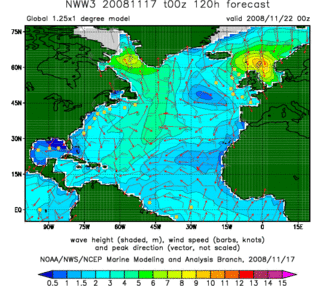 W
WIn continuum mechanics, wave action refers to a conservable measure of the wave part of a motion. For small-amplitude and slowly varying waves, the wave action density is:
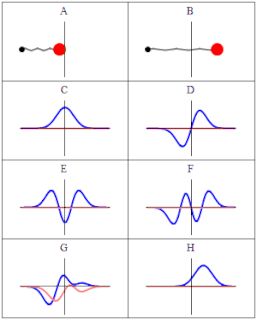 W
WA wave function in quantum physics is a mathematical description of the quantum state of an isolated quantum system. The wave function is a complex-valued probability amplitude, and the probabilities for the possible results of measurements made on the system can be derived from it. The most common symbols for a wave function are the Greek letters ψ and Ψ.
 W
WWave loading is most commonly the application of a pulsed or wavelike load to a material or object. This is most commonly used in the analysis of piping, ships, or building structures which experience wind, water, or seismic disturbances.
 W
WIn mathematics, Fresnel's wave surface, found by Augustin-Jean Fresnel in 1822, is a quartic surface describing the propagation of light in an optically biaxial crystal. Wave surfaces are special cases of tetrahedroids which are in turn special cases of Kummer surfaces.
 W
WIn physics the wavefront of a time-varying field is the set (locus) of all points where the wave has the same phase of the sinusoid. The term is generally meaningful only for fields that, at each point, vary sinusoidally in time with a single temporal frequency.
 W
WIn physics, the wavelength is the spatial period of a periodic wave—the distance over which the wave's shape repeats. It is the distance between consecutive corresponding points of the same phase on the wave, such as two adjacent crests, troughs, or zero crossings, and is a characteristic of both traveling waves and standing waves, as well as other spatial wave patterns. The inverse of the wavelength is called the spatial frequency. Wavelength is commonly designated by the Greek letter lambda (λ). The term wavelength is also sometimes applied to modulated waves, and to the sinusoidal envelopes of modulated waves or waves formed by interference of several sinusoids.